What Is Social Proof
Social proof is a social and psychological phenomenon in which people follow the actions of others when they need guidance. Basically, they believe that if many other people behave in a certain manner that is the correct behavior.
Social proof can be a powerful tool for marketing, allowing you to attract more customers by showcasing your authority. This is especially important for online bookings, when customers don’t have the product in hand to check out for themselves. Thus, 92% of online shoppers check product reviews before booking.
Social proof is even more persuasive when it comes from someone users know, such as friends or celebrities. For example, over 80% of Americans seek recommendations from their family members and friends before making a purchase. Furthermore, users are mostly influenced by people that resemble them, so make sure to study your audience and display testimonials that your clients can refer to.
So, what is social proof in marketing? Today, brands implement this strategy in a number of ways, such as:
- Review sections on the website
- Reviews on third-party platforms
- Case studies with customers
- Reader/customer count
- Real-time sales notifications
- Trust badges
- Social media shares
- Celebrity and expert endorsements
- Milestones in business development
These are just a few ideas to implement on your website to efficiently leverage social proof in advertising. Below, we’ll look in detail at some of the most popular social proof formats and share the best practices for marketers.
How to Leverage Social Proof for Marketing
Social proof for websites comes in a variety of formats and below we’ve gathered eight of the most compelling ways to build trust with your audience.
1. Customer Reviews
Positive reviews from customers are key to establishing trust with online audiences. These reviews help prove the legitimacy of your business and the quality of your services.
A study by BrightLocal reveals how important reviews are to attract new clients:
- 79% of consumers trust online reviews just as much as personal recommendations and the number of reviews is growing every year.
- The overall star rating, legitimacy (how real the service is), and recency of the review are the most important factors for consumers when it comes to user feedback.
- Most customers require a three-star rating to consider using a service.
- Over half of consumers check two or three different review websites before making a purchase, while only 20% stop at one site.
- 96% of consumers read responses from businesses to their reviews.
- Negative testimonials are off-putting for 92% of consumers. If you receive one, make sure to respond to it correctly.
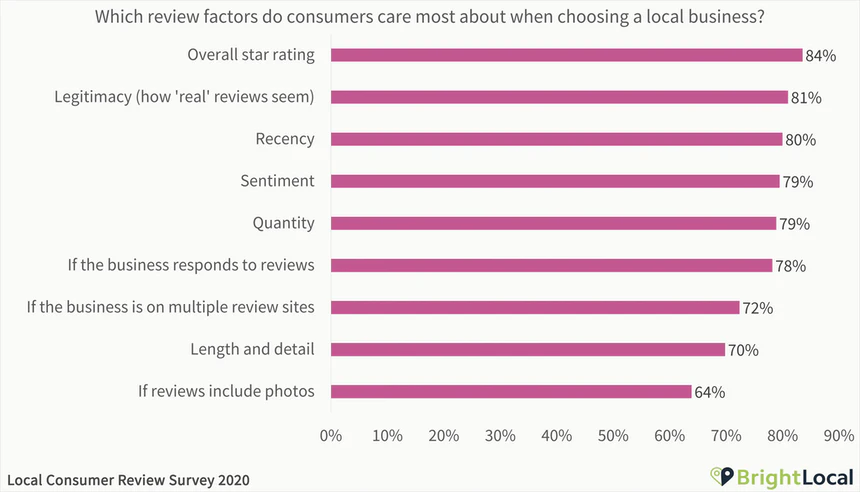
Creating a review section on your site will make your users feel safe about their purchases and can increase sales by 18%. This is also beneficial for the search optimization of your site. Tools like Reevoo, Bazaarvoice, and WPForms can easily collect and display reviews on your site. If you use WordPress, check out Thrive Ovation: this plugin finds and adds comments from social media and blogs to your testimonial section.
One of the best social proof examples for ecommerce can be found on Amazon. As the world’s largest online retailer, Amazon knows its way around driving sales through social proof. Thus, it incorporates reviews for every listing on the site so customers can share honest feedback and inspire others to make a purchase.
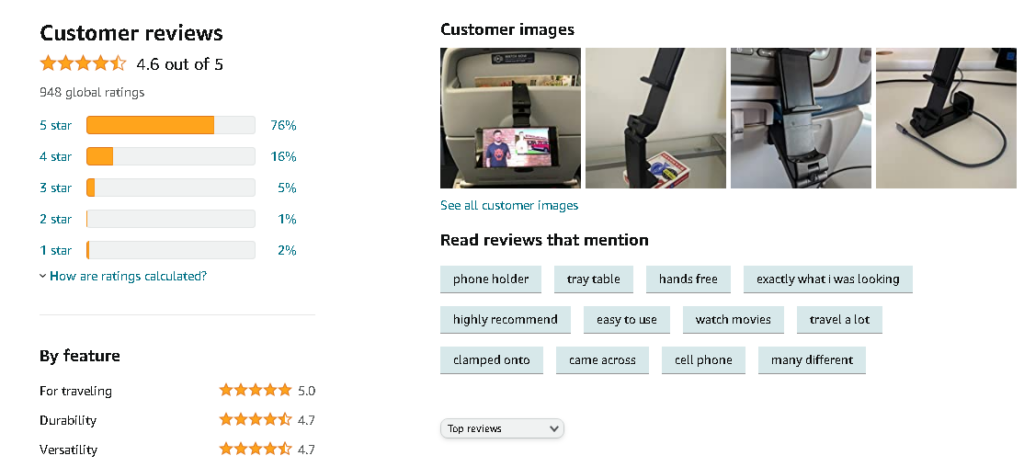
2. Likes and Shares
You can also add social share buttons and counters to your website as a form of social proof. These will show that many people have enjoyed and shared your content and can encourage others to follow their lead. You can add buttons in your website builder or use apps like Social Media Icons, ShareThis, and AddThis.
During this process, you need to be careful when thinking about where to place social proof data. For example, adding buttons at the top of your page can backfire if you have few shares, so it might be better to put them on the side of the page, just like on the My Life’s A Travel Movie blog.
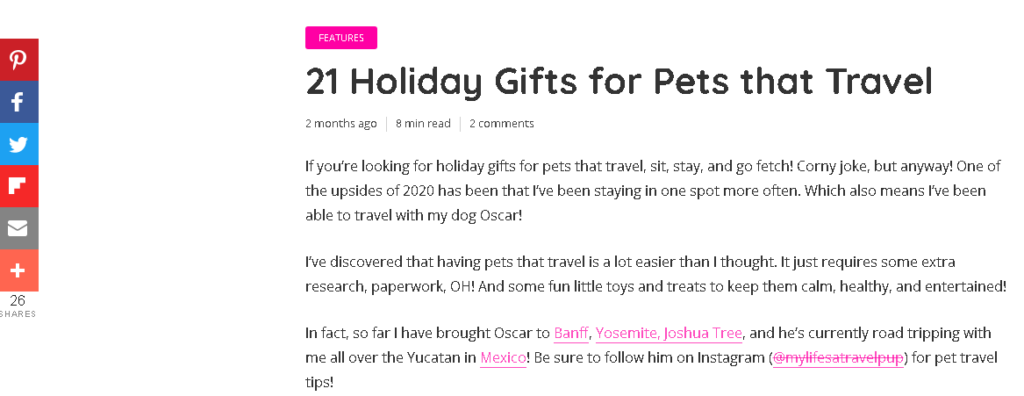
3. Social Media Following
While your number of social media followers doesn’t represent success by itself, it can still be used as a form of social proof. For example, Drew Binsky, travel blogger and vlogger, displays his social following stats right on the homepage of his website.

4. Influencer Endorsements
Influencers are people with large, active social followings as well as knowledge and authority in the niche, such as celebrities, industry experts, etc. Influencer endorsements can be a great way to increase the inflow of customers, as 49% of consumers depend on influencer recommendations.
It’s important to find the right match for your audience – someone they know and trust. For example, if you mainly target senior citizens, a teenage influencer won’t be the best fit. Make sure to analyze your audience before inviting expert guests.
There are plenty of endorsement forms that you can use to build social proof: social media mentions, reviews, webinars, and so on. For instance, ConvertKit places testimonials from its celebrity clients, such as Glo Atanmo, on the homepage to establish authority.
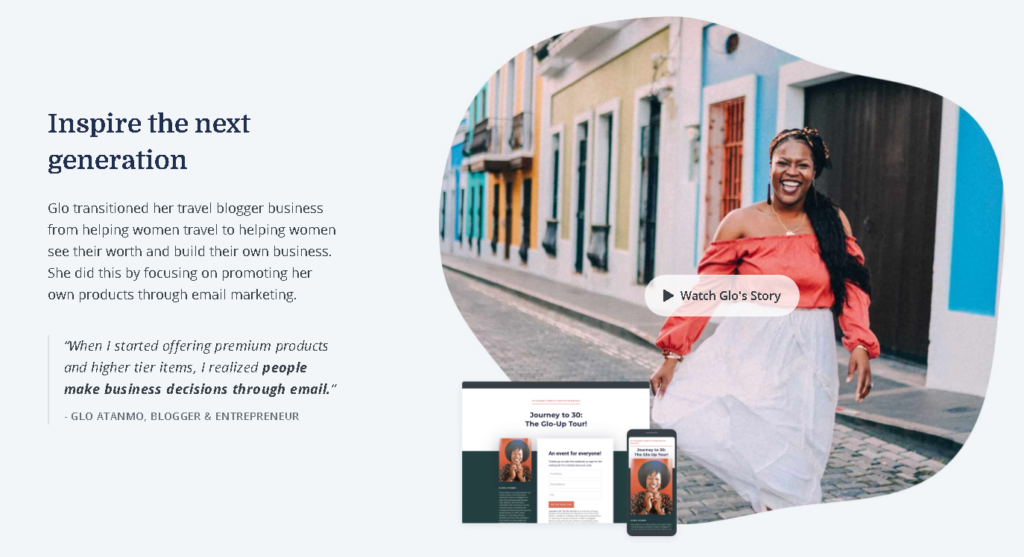
Inviting experts to join you for a webinar or interview is also a great way to create social proof for websites, as the audience is likely to attribute the expert’s authority to your business. Such collaborations are beneficial for both sides, because they allow for cross-promotion. For example, at Travelpayouts, we often run online meetups with industry experts so that our audience has a fresh perspective and the latest news from the niche.
5. Customer or Reader Count
If you have a large customer or subscriber base, showing these numbers can create a positive first impression on new users. After seeing that you’ve won the trust of so many people, newcomers will likely consider your offer to be truly valuable. You can display:
- The number of your subscribers or readers
- The number of people who are currently viewing your page
- The number of countries your readers are in
- The number of bookings made through your links daily, weekly, monthly, etc.
- The number of recommendations or reviews from your customers
Here is one of the social proof examples for the website from SendinBlue. The company displays some impressive numbers proving its expertise as well as names of its most famous clients.
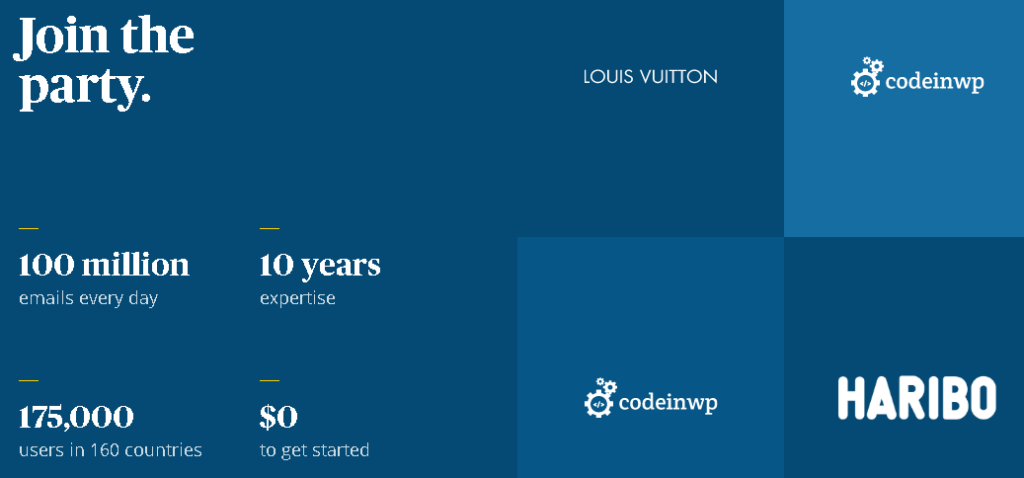
You can also show visitors real-time stats like registrations, bookings, the number of visitors, downloads, etc. For example, tools like TrustPilot, Automizely, or ProveSource display the recent activity on your site, such as purchases or signups, in a popup, like the one below.

6. Awards and Mentions
Displaying awards, certifications, and other forms of recognition might be the best example of social proof. They serve as evidence to support the legitimacy and trustworthiness of your business. The more recognizable the source of your award, the more valuable it is for your site.
Adding social proof badges can significantly boost your conversions, as evidenced by Bag Servant. To make up for the lack of trust with its audience, the company replaced the number of its Twitter followers in the site header with a trust badge from a renowned businesswoman. This change increased conversions by 72% and improved site engagement by 10%.
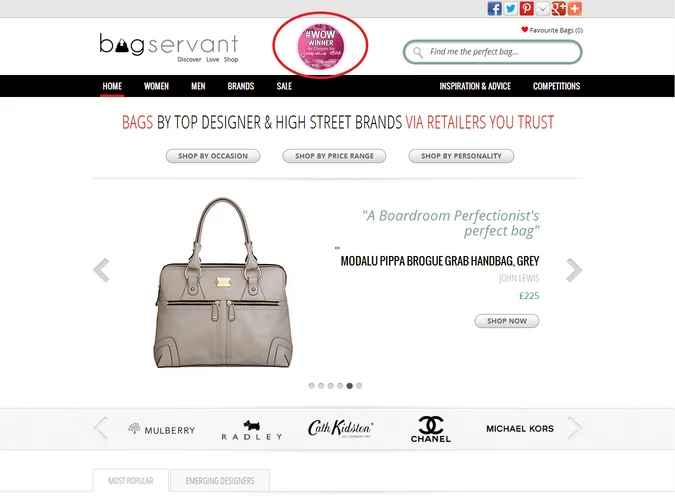
You can also display magazine and TV features, podcast interviews, and so on. Use tools like Funnels&Templates to add social proof bars with logos of media outlets. For example, on the Dan Flying Solo blog, you can see logos of renowned websites that featured Dan’s works.

7. Case Studies
Case studies require more effort and time to create, but they are also one of the most convincing forms of social proof. Stories are more persuasive than numbers as they convey emotion and linger in readers’ minds for longer.
Basically, a case study is a description of how your brand turned your customer’s life or business around. The key to a powerful testimonial is to give a detailed account of the problem that you helped solve and show specific results that were achieved by your customers. For example, ActiveCampaign shares their clients’ testimonials right on its homepage.
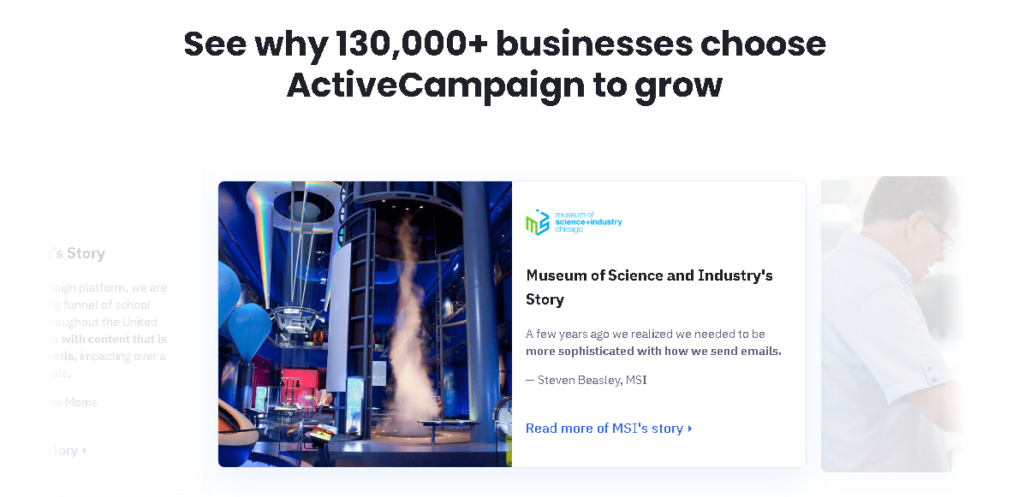
You can invite satisfied customers to share their positive experience with your business and give a testimonial. On our blog, we’ve gathered some great tips to help you write a case study and inspire visitors to decide in your favor.
8. Photos of Customers
To make reviews and testimonials more powerful, be sure to add faces to the words. If you are going to quote someone from your audience, include their photo or link to their profile on social media. This will help increase trust with your audience and make the quote more believable, as evidenced by the research. For example, Matthew Woodward includes clients’ photos for each testimonial he publishes on the site.
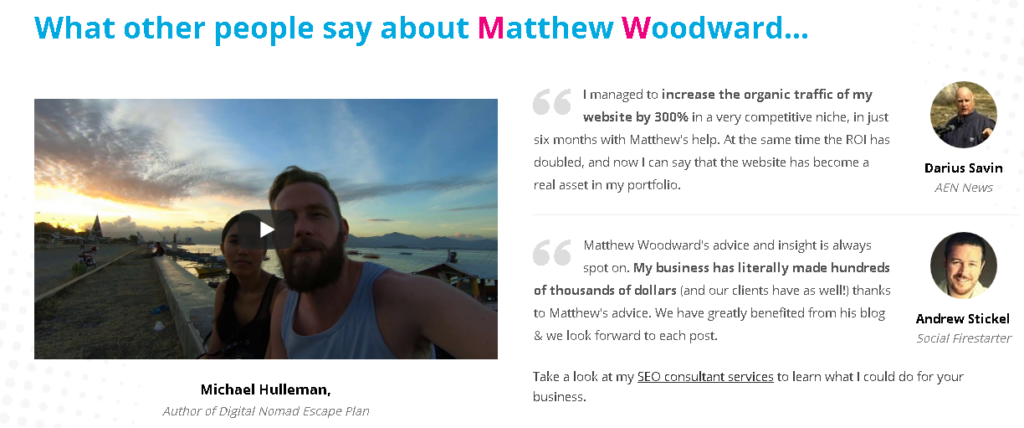
You can enhance it by adding a relevant call to action, such as “Join 10,000 followers today” and so on.
Another idea is to add a section to your site featuring photos of customers with your product or their creations, etc. People enjoy being featured, so why not increase engagement of your audience and leverage social proof at the same time.
How to Leverage Social Proof for Blog Marketing
Building trust with customers takes time, especially for new businesses. However, you can speed up the process using social proof. It’s a powerful tool that makes people feel safer purchasing from you as they see the positive experiences of your existing customers. Be sure to test various forms of social proof to find the ones that work better for your audience and implement them across different marketing channels.




